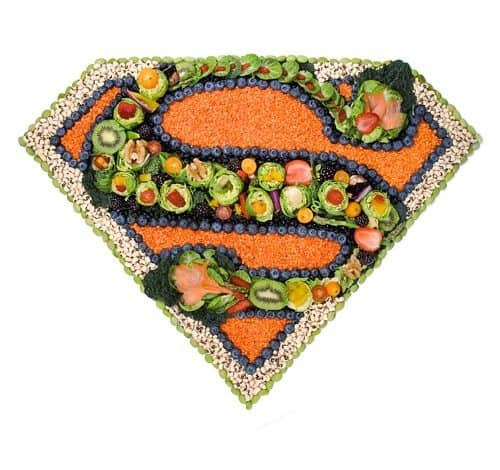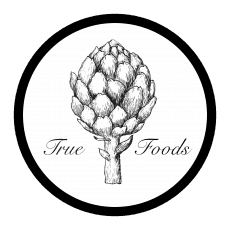
The Darkside of superfoods
Chia Pudding, Acai Power Bowl, Matcha Latte, and Green Smoothie – They all have something in common; all of them contain so-called superfoods. But it is not only producers and retailers, who affirm their beneficial impact on health.
“A look behind the Facade”
This lifestyle trend is also promoted by supermarkets, bloggers, and in hospitality (EUFIC, 2012). It looks like everyone has fallen for them and in the present time nobody can escape this movement. But below the nutritious surface, there is also a dark side, caused by the exploding demand for superfoods. Next to their positive promotion for the customer’s health, the harm they cause to the global environment cannot be withhold. That brings up the question: Do we really need superfoods in our daily diet?
Why are they so popular ?
Superfoods enlarge our daily nourishment and advertised a healthy lifestyle as fashionable. People are becoming more interested in eating healthy and reject fatty fast food (Lutz, 2014). The superfood hype encouraged self-cooked meals and made cooking socially accepted again. This may cause a positive effect on society’s future health level. Especially among the younger generation many more people enjoy cooking a self-cooked dinner again, next to an increased awareness for healthy living. The fact that it is trendy, at the present time, to deal with good nutrition, might be triggered by superfoods (Soat, 2015).
Get the same for less money – locally !
On the other hand, local and regional products have similar nutrients, a shorter transport route but less advertisement than superfoods (Hill, 2007). Even though their benefits were known already several centuries ago, this old knowledge is partly forgotten or seen as old-fashioned. Also, inconvenient might be their name, that appears in grandmother’s receipts. Compared to the exotic names of superfoods, well known foods loose. Nonetheless, they are in no way inferior, only less advertised by media. To name an example, the promoted healthy fatty-acids of chia-seeds can also be found in flax seeds. Even their product features are comparable (McClees, 2014). They are comparable until it comes to the price, where the customer pays a lot more for the lifestyle product. From the side of ingredients, there is no need to import superfoods from far away countries, because it is possible to find anonymous superfoods in our home sphere, too.
What is wrong with superfoods ?
Moreover, the perception of the “good for the body, good for the planet”-attitude of superfoods is in many cases incorrect. Many superfoods are environmental unfriendly in cultivation. The production of one kilogram avocado, for example, uses 1000 liters of water and concludes to degradation of millions of hectares of forest for new avocado plantation (Raether, 2016). Especially the quickly increasing demand results in damaging cultivation and exploiting agriculture. Cause for that is the booming market, that promises the possibility of a great profit for producers. Nobody wants to be left behind, everybody pursuits to become part of the money-makers. It is the old story about greed. But this mass production exceeds the resources of our planet (McNally, 2007), and simultaneously, a large part of our society is not aware of this production problems or is simply not interested.
What does the dieticians have to say to that ?
Looking from the nutritional side, it is not enough to eat only superfoods. Especially lifestyle blogs promote just single products, but not a rich and diversified diet (MacMillan, 2017). Chips, Chocolate, Coke, and cake as basis, plus simply adding superfoods, does not do the job. The problem is that the term gives consumers this impression. The human body needs a more varied choice of food to stay healthy (Hill, 2007). Furthermore, many people forget the relations. It might be true that you find a lot of the healthy polyunsaturated fatty acids in chia seeds, to give a number 23.3g/100g (Condé Nast, 2014). But exactly these 100g are making the calculation unrealistic, it is very unlikely to eat this amount of Chia seeds. According to Catherine Collins, chief dietitian at St George’s Hospital, London, United Kingdom is it misleading to evaluate that foods particular rich in vitamins or minerals are superior, it is a well-balanced diet that makes us stay in good physical shape (Hill, 2007).
As a result of that, a varied diet provides the human body with all essential macro and micronutrients (EUFIC, 2012). Subsequently, it is not necessary to eat superfoods to cover the recommended daily intake. With a well-balanced plant-based diet, which is mostly unprocessed, it is easy to stay healthy. The addition of vitamins and minerals, provided by superfoods, will be excreted by the metabolism since the body has no need for them. Furthermore, there is not enough trustworthy evidence for the benefits of superfoods because of missing long-term studies (FDA, 2015), (Childs, 2014). Present investigations can only provide indications (Sohn, 2008). One statement scientists agree on; is the fact that superfoods can never replace a rich diet (Hill, 2007). With a nutrition rich of vegetables, fruit, whole grain, an appropriate amount of milk products, fish, meat and a selection of high-quality plant-based fat; the consumption of superfoods is superfluous.
Conclusion
Superfoods are hip, and this tendency will remain for longer. Every year a new, and even more superior product is discovered. But the bad ecological footprint, the fact that they are actually unnecessary to cover the daily recommendations for nutrients, and the presence of substitutes make the glory reputation of superfoods less shiny. The real problem can be found by the simple-minded attitude of the society. They follow this trend blindly, where only half-truths are promoted. People should be informed by official and scientific sources, and not by lifestyle-bloggers, without any knowledge in the background.
Fiowls recommendation
My recommendation for this topic is, that superfoods should be seen as nice extension of nourishment, but not as basis. The daily diet should plant based, but containing products from all segments. The nutritional-pyramid can be a good help to make the right choice. With groceries cultivated in their homeland and neighbor countries, humans are able to feed themselves healthily without the bitter aftertaste of destroying their planet.
by Fiowl








